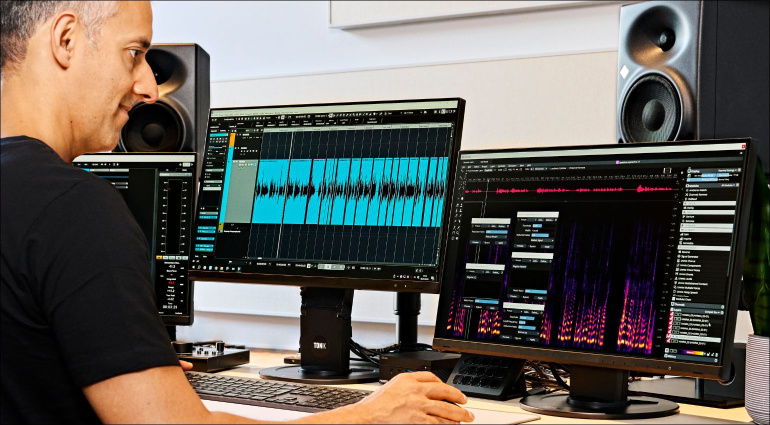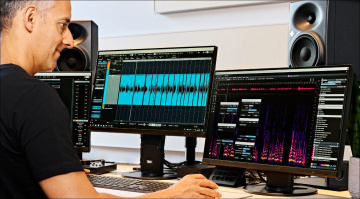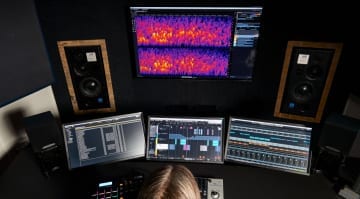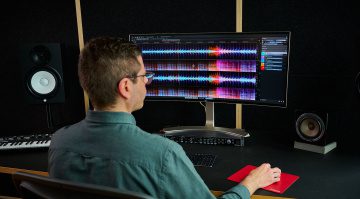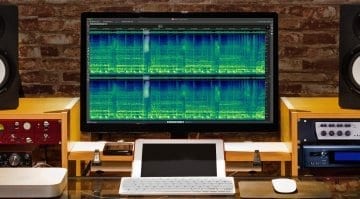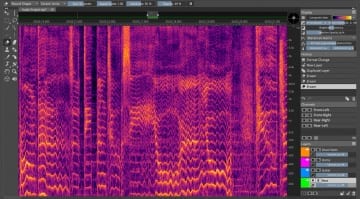SpectraLayers 11: Steinberg Takes AI-powered Unmixing to a new Level
Steinberg SpectraLayers 11 is here! Not surprisingly, the new version of the spectral audio editing software is all about AI. With features like enhanced unmixing, improved speech processing, and powerful noise recognition, Steinberg SpectraLayers 11 promises to raise the bar of spectral audio editing.
Steinberg SpectraLayers 11
Steinberg’s SpectraLayers audio editing software has always been the tool of choice for things conventional audio editors can’t do. With the new version released today, the developer takes this to a new level by integrating several new AI-driven features and precision tools for music, sound design, audio restoration, and repair.
In addition to a new Unmix Chorus module for separating lead and background vocals, SpectraLayers 11 introduces an innovative Unmix Crowd Noise module. By separating the crowd noise from the actual performance, this new module opens up new possibilities for mixing live performances. In addition to this, SpectraLayers 11 features an enhanced Unmix Song algorithm that automatically separates up to seven discrete instruments. Steinberg says this also delivers improved results for unmixing stems, drums, multiple voices, and more.
Furthermore, SpectraLayers 11 includes a new AI-powered Voice DeClip algorithm for repairing clipped speech recordings. According to Steinberg, the algorithm has been trained on thousands of clipped and non-clipped recordings. The Voice DeNoise module has also been improved to better handle excessively noisy content.
Workflow and GUI Improvements
In addition to this, Steinberg SpectraLayers 11 comes with many new features for an improved workflow. Modules are now displayed in their own dedicated panel for quick and efficient access. Moreover, you can now chain modules to create sophisticated multi-process configurations. Each module in a chain can operate on whole layers or layer selections, and processes can be diverted to other layers and repositioned in the chain. Once you’ve set up a chain for a specific task, you can save it as a preset.
Other workflow improvements include the ability to add files to the batch process dialog via drag&drop. You can then select the desired export options and render the result as a mixdown or independent layers. The GUI has also been redesigned with a new home screen and a compact panels view, which enlarges or reduces the spectrogram and waveform displays while keeping the controls accessible at all times.
You can also now select multiple layers to merge, duplicate, delete, or group them, and simply drag them into your Cubase or Nuendo project in ARA mode. By dragging layers to the desktop, you can quickly extract transcoded audio files.
In addition to this, SpectraLayers 11 comes with a new Transfer Brush tool that shifts content between source and destination layers in real time. There’s also a new Transient Pencil tool for drawing or reconstructing transients directly in the spectrogram.
That’s a pretty big update – and we haven’t even reached the end of the feature list yet. You can find out more about what’s new in Steinberg SpectraLayers 11 on the developer’s website or by watching the YouTube videos.
Price and Compatibility
Steinberg SpectraLayers Pro 11 and Elements 11 are now available at Thomann* for $259/£248/€289 and $71/£67/€79, respectively. If you already own SpectraLayers or another Steinberg product, check the website for your upgrade options.

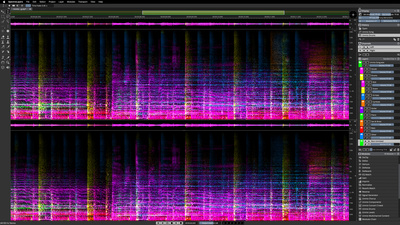

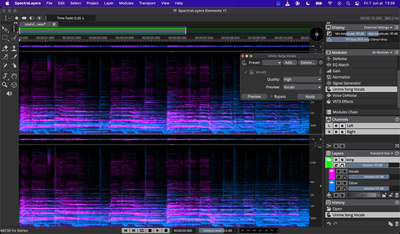
SpectraLayers 11 runs on Windows 10 or higher and macOS Big Sur or higher (including native support for Apple Silicon processors).
More about Steinberg SpectraLayers 11
More Videos
*This post contains affiliate links and/or widgets. When you buy a product via our affiliate partner, we receive a small commission that helps support what we do. Don’t worry, you pay the same price. Thanks for your support!
 4,5 / 5,0 |
4,5 / 5,0 | 